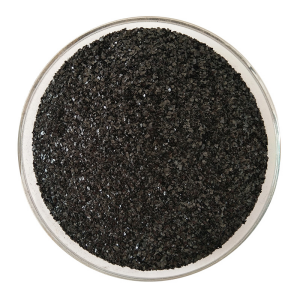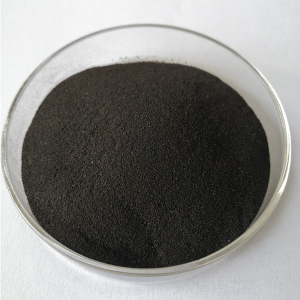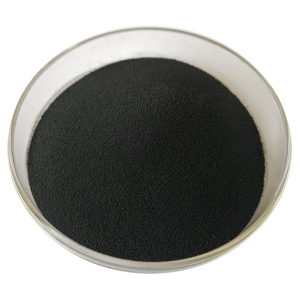Ascophyllum nodosum-Algae with Mysterious Power
Algae is the primary producer in the ocean, the largest biomass and renewable marine biological resources, through photosynthesis, carbon sequestration and oxygen production to produce organic matter, supporting a huge chain of marine organisms, and maintaining the balance of the marine ecosystem and even the global biosphere.
The ocean area accounts for 71% of the total area of the world, the ocean contains a wealth of biological resources and pharmaceutical resources, including seaweed resources are of great help to us, so far, seaweed in the food, drugs, feed, cosmetics, fertilizers, dressings and bio-energy, and other fields and within the scope of the huge economic value and development potential.
Seaweeds have the natural characteristics of adsorption and condensation of nutrients in seawater, coupled with the complex living environment, seaweeds contain a large number of active substances beneficial to the growth of plants, which is an excellent natural raw material for the manufacture of functional organic fertilizers; however, different kinds of seaweeds in different sea areas have different nutrient types and contents.
At present, the seaweed raw materials used in the global production of seaweed fertilizers mainly include Fucus vesiculosus, Kelp, kelp, sargassum and seaweed, etc. Among them, Fucus vesiculosus is the classic raw material and mainstream raw material for the production of seaweed fertilizers in the international arena. Fucus is rich in mineral and organic nutrients, and is the best raw material for processing seaweed fertilizer.
Ascophyllum nodosum belong to the brown algae, mainly distributed in the North Atlantic coastal waters, such as Canada, Norway, Ireland, Britain, France, Spain and other countries. Algae is very amazing, the appearance of slender, seedling strong, with similar roots, stems, leaves and other organs, brownish green, with a nutrient bubble in the center. Its tenacious vitality, growing on the rocks of the seashore, or the bottom of the sea, has a very strong enrichment and absorption capacity, can enrich the nutrition in seawater, and metabolism synthesis and other dozens of bioactive substances. Containing seaweed polysaccharide, mannitol, phenolic polymers, betaine, abscisic acid, fucoidan, amino acids, fatty acids, proteins, indole organic acid family growth class, cell agonist family regulator, gibberellin family regulator, and elements of K, Na, Ca, in addition to Fe, Zn, Se, Cu, and other trace elements such as trace elements and a variety of nutrient elements material.
BlueAlga Seaweed Extract is extracted and concentrated from Northern Ireland leafy algae through scientific process. At present, there are three kinds of seaweed extracts: flake, powder and microparticle.



Its main ingredients and functions are as follows:
1. Natural growth regulator
Plant growth regulator-like components in seaweeds include cytokinin, polyamines, gibberellins, abscisic acid, indole 3-acetic acid, agonins and so on, and their roles in plant growth and development have also been confirmed. Betaine is widely found in seaweeds as well as their extracts and enhances the resistance of seaweeds to osmotic stress, and its structure and function vary according to seaweed species. In addition, seaweed phenolics also have good growth-promoting effects.
2. Seaweed polysaccharide
Seaweeds are rich in a variety of polysaccharides that land plants lack, including alginic acid, fucoidan sulfate, fucoidan and fucoidan starch, etc., which are also important index components of seaweed fertilizer. Alginic acid has the characteristics of gel, chelating and hydrophilic, etc. It has a good effect on keeping soil and water, promoting the formation of granular structure, activating mineral elements and adjusting the pH value of soil. The seaweed fertilizers produced at present mostly take alginic acid as the main functional component, which is also fully reflected in the standard of seaweed fertilizers formulated by the state. Seaweed polysaccharide can also be degraded into fucooligosaccharides of different small molecular weights, which have growth-promoting active functions.
3. Seaweed proteins, peptides and amino acids
The seaweed proteins in Fucus vesiculosus contain not only conventional amino acids such as aspartic acid and glutamic acid, but also threonine, serine, proline, glycine, alanine and so on, and all of these unique amino acids have good functional activity. Seaweed proteins have inhibitory effect on banana anthracnose bacteria, and different sources have different mechanisms of action. Peptides, amino acids and other fertilizers also have a very good effect, compared with other kinds of foliar fertilizers, "peptide-amino acid" foliar fertilizer can obviously improve the absorption of nutrients, prolong the time of nutrient absorption, improve the quality of the crop, increase crop yield, and effectively inhibit the occurrence of soil-borne diseases in the soil, while microorganisms have a good effect on the development of soil-borne diseases in the soil. The microorganisms have good degradation effect on marine macromolecules.
4. Lipid compounds
The fatty acid content of Alphanizomenon vesiculosus is not high, but it is rich in variety. Although such substances are seldom involved in research reports on seaweed fertilizers, in view of the biological effects of these substances, it is presumed that they also have positive effects on plant growth and development and stress resistance. In addition, since the organic nitrogen and phosphorus contained in fatty acid components can only be absorbed and utilized by crops after being decomposed by microorganisms, fatty acid-containing seaweed fertilizers are more long-lasting, and the effect may be better when combined with microbial fungicides.
5. Inorganic element content
There are rich mineral species in the seaweed, among which the content of K element is the highest, followed by the content of Na and Ca, and it also contains high content of trace elements such as Fe, Zn, Se, and Cu, etc. The content of K element is slightly lower than that of Ca. The K content was slightly lower than that of wakame sporophyte and much higher than that of thick-leaved kelp, while the Na and Ca contents were higher than those of wakame sporophyte and thick-leaved kelp.
Potassium also plays an important role in plant growth and development, but it is not directly involved in the composition of biomolecules like nitrogen and phosphorus. Its main role is that in the presence of the right amount of potassium, the plant's enzymes are able to perform their full function. Potassium promotes photosynthesis. In addition, potassium promotes carbohydrate metabolism, promotes nitrogen metabolism, enables plants to utilize water economically and efficiently, and improves plant resistance. Potassium promotes the synthesis of cellulose and lignin, thus making the plant's stems thicker and more resistant to stunting. In addition, the enhanced synthesis process increases the content of starch and protein, while decreasing the content of simple sugars, free amino acids, etc., and reduces nutrients for pathogenic organisms. Therefore, when potassium is sufficient, the plant's disease resistance is greatly enhanced. For example, when potassium is sufficient, it can reduce the damage of rice blight, leaf blight, rice blast, red blight and corn stem rot, large and small spots. Potassium can improve the plant's ability to tolerate adverse environments such as drought, low temperature, salt damage and resistance to pests, diseases and falls.
Calcium is an important element that constitutes the cell wall; it combines with protein molecules and is an important component of the plasma membrane; calcium is an activator of certain enzymes and thus affects the metabolic processes in the plant body. It has a special function in regulating the physiological balance of the medium. When plants are deficient in calcium, they are short, the root system is stunted, and the phloem tissue of stems and leaves and root tips is damaged.
Iron is present in plants in small amounts, usually a few thousandths of the dry matter weight. Iron is necessary for the formation of chlorophyll, and when iron deficiency occurs, chlorosis occurs, and leaves are yellowish or even white. Iron also participates in cellular respiration, in the process of cellular respiration, it is a component of some enzymes. Thus, iron plays an important role in respiration and the process of metabolism.
The mobility of iron in the plant body is small, and the iron in the old leaves cannot be transferred to the newborn tissues, thus it cannot be utilized again. Therefore, when iron deficiency occurs, the lower leaves often remain green, while young leaves show chlorosis.
Zinc is a constituent of certain enzymes in plants. Zinc is also necessary to facilitate some metabolic reactions. Zinc is essential for chlorophyll production and the formation of carbohydrates.
Applications of Selenium's role in crops is mainly reflected in the promotion of plant growth and development. The moderate application of selenium-containing fertilizers can enhance the photosynthesis of plants, thus increasing their yields. Selenium as an antioxidant improves the storage resistance of fruits and other cropsSelenium application during the growth of fruit trees improves the storage resistance of fruits due to its positive effects on a range of intrinsic qualities, including pulp firmness and soluble solids content. In addition, as already mentioned, selenium increases the antioxidant activity of the plant, slows down the rate of ethylene synthesis and maintains fruit firmness, thus enhancing its storability.
Copper is a constituent of several oxidative enzymes in the crop and therefore has an important role in redox reactions. It is also involved in plant respiration, which affects the crop's utilization of iron, and contains high levels of copper in chloroplasts, thus copper is associated with chlorophyll formation. Not only that, steel has the ability to increase the stability of chlorophyll and prevent it from suffering premature destruction, which facilitates better photosynthesis in leaves. Copper catalyzes several plant processes.



 Mobile: 86-13012553585 15610518510
Mobile: 86-13012553585 15610518510 Phone (Fax):86-53283197178
Phone (Fax):86-53283197178 E-mail: admin@bluealga.com
E-mail: admin@bluealga.com Add:No.918 Lingang 8 Road Huangdao District,Qingdao China 266400
Add:No.918 Lingang 8 Road Huangdao District,Qingdao China 266400

